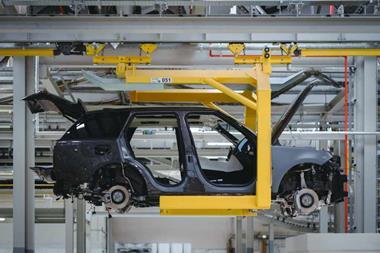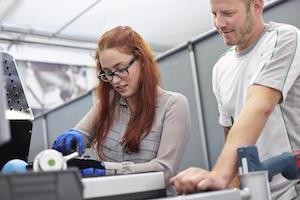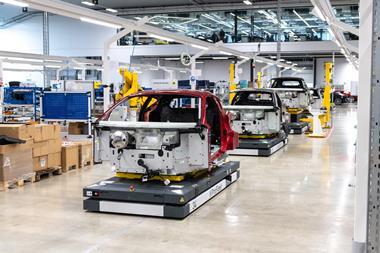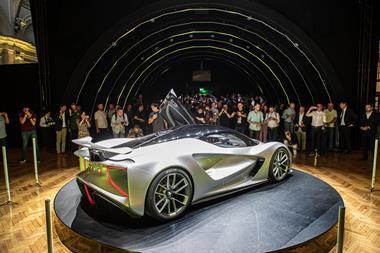Sapa Components was on the brink of bankruptcy in 2009 but has been turned around by winning the contract to deliver aluminium trim strips that feature on the new Peugeot RCZ coupe
Formed in 1964, Pressweld became part of the Sapa Group in 2002. Now known as Sapa Components (Pressweld), the business remains focused on the fabrication and finishing of aluminium parts, a process that includes cutting, machining, forming, anodising and final assembly of parts for companies such as Aston Martin, Land Rover, Bentley, Lotus and Jaguar.
Andrew Hibbert, Managing Directo says: “There are many companies that can machine or anodise aluminium, but we’re one of the few that can offer all these operations under one roof, a one-stop shop.” Hibbert says that the company came close to closing in 2009. “We entered 2008 thinking we were going to have our best ever year, but over the last three months, we lost the whole year’s profits. Sales were down by up to 85%. Bentley stopped production for three months and we had doubts about new model launches for Bentley, the Jaguar XJ and Aston Martin VH400 (Rapide).” In order to survive, Sapa had to make 50% of its workforce redundant and switch to a three-day week, for nearly nine months.
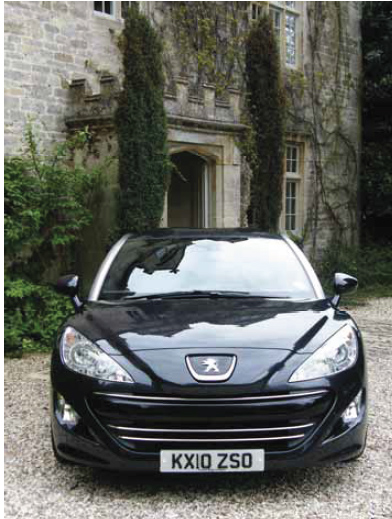
It was not until the second half of 2009 that the company saw a marked turnaround, starting with Aston Martin’s announcement that it would go ahead with production of the Rapide. This was followed by an approach from Peugeot – the company was interested in having Sapa produce aluminium parts for the carmaker’s new RCZ coupe. “A German company had been lined up to supply the parts to Magna Steyr, in Graz (Austria), where the car was to be built,” says Hibbert, “but there were issues which resulted in Magna deciding to pull out. We were officially awarded the contract in September 2009.”
Up to that point, Hibbert says that Sapa had seen a total of six examples of the part they were to produce. “We went from nothing, to completely rebuilding the factory and hand-producing parts that were originally fabricated in Turin, Italy. These were shipped to us for finishing, a process involving linishing, polishing, anodising, before being sent to Germany for final assembly, using moulded plastic parts flown in from China. The finished parts were then delivered to Graz. It was a nightmare.”
Changes at the factory required a full rebuild of Sapa’s polishing shop. Where the company had been told it would take an hour to hand-polish each part – at the time the company had seven hand polishers – the reality was that it was taking four hours to complete each piece, with a 70% rejection rate. To keep up with demand – and the punishing return rate – the company recruited 20 hand polishers from all over Europe, including Portugal, Slovakia, Poland and Germany. Housed in local hotels, the team worked three shifts, seven days per week.
There was more to come. A month after start of production, Sapa was requested to start delivery of customer-quality parts, as the first saleable examples of the RCZ were ready to roll off the line. Part quality had to improve, as did turnaround times. Hibbert: “Over Christmas, we installed a robotic finishing and polishing cell. Within 10 days, the cell was commissioned and at full production, sending finished parts to Magna.”
In January this year, Hibbert was informed that Sapa had to deliver 2,500 part pairs by March 31 or the car would not be launched. With a possible penalty of €5,000 per car, this amounted to a potential fine of over €12m. To meet demand, a second robot was installed in early March. “I didn’t think we’d do it,” says Hibbert, “but we just managed the numbers with the second robot.”
 With the RCZ coupe proving to be a popular model, Hibbert is hopeful that Peugeot will increase production numbers, but that will mean having to add capacity. “We may have to purchase a further robot to get the required volumes.” Yet from a management point of view, this will only add further complication. “Every piece of equipment on the shopfloor has been moved since September. It’s been a struggle to bring it all in, fit it in and get it working, while trying to create additional space.”
With the RCZ coupe proving to be a popular model, Hibbert is hopeful that Peugeot will increase production numbers, but that will mean having to add capacity. “We may have to purchase a further robot to get the required volumes.” Yet from a management point of view, this will only add further complication. “Every piece of equipment on the shopfloor has been moved since September. It’s been a struggle to bring it all in, fit it in and get it working, while trying to create additional space.”
Production outline
While Sapa currently has the extruded aluminium parts delivered from Brokelmann in Germany, Hibbert is anticipating part production starting at one of Sapa’s own UK-based extrusion plants. Will the closing of Anglesey Aluminium affect the delivery of raw material? “Our aluminium comes from all over the world. Sapa Group is now the largest extrusion company in the world, generating over one million tonnes of extrusion from billet per year.”
In cross-section, the part delivered to Sapa features a light convex curve, with a rib located on the inside that runs the full length of the part. This basic component is first put through a press tool before being cropped and shaped. A press former is then used to curve and shape the part before a second press tool crops the ribs at each end created where the former grabs the part. Cut to length, the fixing holes are made before it is anodised and assembled. Fixings attached to the rib attach the part to the car.
“The press tools put the flair into the back end of the part (where the rear of the part meets the boot lid). It was this tool, delivered from BCA Automation, based in Turin, that we found to be damaging the part. We had to perform a tooling upgrade, as correcting the problem was only adding to the linishing and polishing time. The technique is to make sure that these tools are as good as you can get, so that no damage occurs during the production process.” Given the continuous curve of the part, how is repeatability achieved? “All the parts are made to tolerances of 0.5mm, while each of the fixtures is quality checked. There were a lot of problems with the tool cropping the profiles. The tools shipped in from Italy had soft, not hardened edges. These would last maybe 200 cuts, when we want to the tools to last 100,000 blows. Longevity makes a huge difference.”
Process overview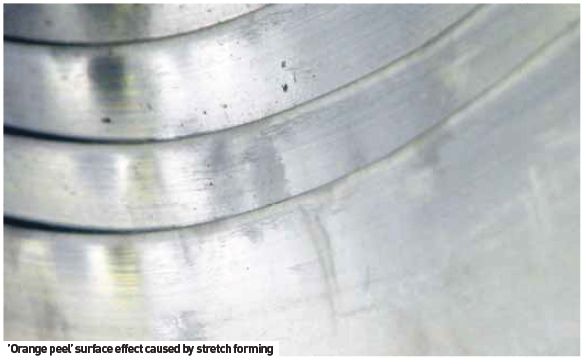
While meeting individual part tolerances is of vital importance to achieving overall repeatability, the mechanical properties of aluminium require specific tooling to ensure stable reproduction. Drew Moore, New Products Development Manager at Sapa explains: “In terms of shaping, the tooling and process steps were largely in place before we came onto the project. For a part of this type, where you need accuracy and repeatability, we know that press bending, similar to tube bending equipment, tends to return a lot more variability in terms of springback. So for this product, where dimensional accuracy is very important, we use stretch forming.”
Moore adds that unlike other conventional bending processes, where you need to overbend the material to compensate for springback, stretch forming immediately takes the part to the intended shape, with little significant change when the part is removed from the machine. The European reference for this type of aluminium, says Moore, is ENAW 6401, a 99% pure alloy that includes up to eight further elements to enhance its brightening potential, including iron, silicon and zinc.
The material alloy, he explains, is of critical importance. “There are three factors. The material needs a level of mechanical strength in order to function correctly. You don’t want it dented when you lean on the car! As it is a cosmetic item, the alloy must include elements that allow it to be brought up to a high and repeatable level of gloss. The third aspect is temper, or strength. This property is set by how the metal is treated after the extrusion process, primarily with the application of heat. This alloy is a medium temper, which allows it to take a shape reasonably well, but it’s also in a condition that allows it to naturally and rapidly get stronger.” Does this mean that the metal ages? Moore says that within two months, between when the part is delivered to Sapa and it being applied to the car, the natural temper of the aluminium will actually increase, resulting in a harder part. It is a win-win situation, in that the ‘raw’ part is easier to form, while improving strength characteristics make it that much more hard wearing.
The extrusion process is where many of the later part properties are set. Moore: “When it reaches about 660°C, just
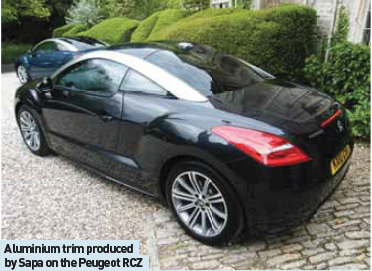 In addition to the standard silver part, a limited edition of the Peugeot RCZ, totalling 200 cars, features aluminium trim parts fi nished in bright chrome. These add a laser-etched commemorative production number and emblem on the left-hand rail. Both the chrome fi nish and laser etching created additional production problems. “We sub-contract the chrome plating of these parts to a Magnaapproved German supplier, Wiotech,” says Drew Moore, New Products Development Manager at Sapa Components. “We ship them in special stillages to Germany, where they receive what is called a ‘Nifos’ fi nish. It’s a problematic process, as the fi nal mirror fi nish highlights any defects in the base material. The left-hand part is sent to a UK company for laser etching. For such a part, the logistics management required to ship parts to Graz in a numbered sequence is very challenging.”
In addition to the standard silver part, a limited edition of the Peugeot RCZ, totalling 200 cars, features aluminium trim parts fi nished in bright chrome. These add a laser-etched commemorative production number and emblem on the left-hand rail. Both the chrome fi nish and laser etching created additional production problems. “We sub-contract the chrome plating of these parts to a Magnaapproved German supplier, Wiotech,” says Drew Moore, New Products Development Manager at Sapa Components. “We ship them in special stillages to Germany, where they receive what is called a ‘Nifos’ fi nish. It’s a problematic process, as the fi nal mirror fi nish highlights any defects in the base material. The left-hand part is sent to a UK company for laser etching. For such a part, the logistics management required to ship parts to Graz in a numbered sequence is very challenging.”
before the melt point, the metal is pushed through a steel die. That material runs out onto a table about 100m long, where it is stretched to achieve the desired straightness. The metal is air-quenched at the point of extrusion, effectively freezing its mechanical properties, shocking it to give a softer condition. It is then cut to part length and shipped.” Moore goes on to say that aside from the trimming operation that takes place during forming, the ‘nest’ shape of the raw extruded part is very similar to the shape of the finished item, the cross-section remaining essentially the same. For the first production step, the extruded part is trimmed and reshaped in a conventional 250-tonne press. The processing of left- and right-hand parts requires a tooling change, though at this point, the part is still perfectly straight.
The stretch forming process is next, and while it offers reliable repeatability and dimensional stability, it is also the cause of one the most time-consuming problems in the production process. When aluminium is in contact with air, a natural oxide forms on the metal’s surface. This hard, brittle residue has a very low expansion rate compared with the pure metal, so as the part is stretch formed, the oxide creates an ‘orange peel’ effect on the surface, a problem further complicated by the ‘grain’ in the aluminium structure. “It’s a recognised side effect of the process,” says Moore. “It’s not an indication of weakness. It is a hindrance, though, as we’re trying to produce a part that’s very shiny and the process drives it in the opposite direction. We simply have to build steps into the fabrication process to deal with it.” After forming, the parts are put through two further pressing and trimming operations, this time carried out in pairs.
Moore points out that although these presses process left and right parts at the same time, it’s not a requirement that the pairs stay together for the remainder of production. The trimmed and formed parts then enter the finishing phase of production. Moore: “Having travelled this far through the process, the surface is looking a little worse for wear, with orange peel and very fine grain lines on the metallic surface. We need to turn this rough state to a mirror finish.”
The first stage to achieving a finished part involves linishing, essentially a grinding process. Each piece goes through three steps of decreasingly finer-grain linishing belts, from coarse, through to medium and fine, which removes most of the surface defects. While this was previously done by hand polishers, Sapa now has ABB robots that pick a single part and move it against each successive sanding belt. A second robot then picks the linished parts for polishing, using first a coarse and then a fine product.
 Keeping the shine
Keeping the shine
These combined processes deliver a mirror-like surface finish, but the oxidization reaction must be stopped. “The finished parts start to oxidize before your eyes. Leave them overnight and the parts will dull down,” Moore reveals. To prevent losing the lustre, each part is anodised, which both ‘freezes’ the finish and hardens the surface.
The anodising process is one of the company’s core competencies. Essentially, the aluminium is treated to make a controlled oxidized surface layer which sets the surface finish. The anodising process, including the hardening process, were developed specifically for this part. “There are 17 tanks, each with a different chemical composition,” explains Moore. “Each part is dipped 20 times (three tanks are repeated). Successful anodising is based on a combination of temperature, pH, time, surface area and quantity.” Quantity is important because as parts move through the process, there is unavoidable crosscontamination between the tanks. “We monitor the tanks, to make sure they’re at the correct concentration and to check for contamination. The parts are anodised at an industrystandard pH of 12.5.”
All fumes are extracted and treated, while acids and waster water are subjected to a neutralization process before being taken off-site for specialised disposal. Some of the tanks have to be exchanged on a weekly basis, others can go longer. “We work to ISO 14001,” he adds, “and the anodising process is a large part of our testing standards. We’ve gone from 20 parts per week to 500. It’s a huge difference in throughput, and it has both increased our chemical usage and the chance for contamination.”
Final touches
Anodised parts do not need to be flashed, as during the process they achieve approximately 100°C. But once dry, they 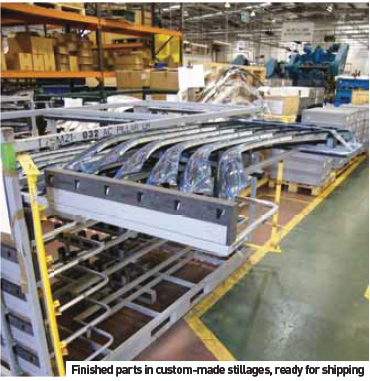 are rigorously inspected. “If there are any imperfections, anodised parts can be sent back for refinishing,” says Moore. “Once we start the assembly process, using adhesives to bond pieces onto the part, if we notice any imperfections, that part will have to be scrapped.” The plastic fixings that were previously flown in from China are now produced in the UK.
are rigorously inspected. “If there are any imperfections, anodised parts can be sent back for refinishing,” says Moore. “Once we start the assembly process, using adhesives to bond pieces onto the part, if we notice any imperfections, that part will have to be scrapped.” The plastic fixings that were previously flown in from China are now produced in the UK.
Once assembled, which includes the addition of a fivemetre weather stripping seal to provide a soft edge and a pin that helps with positioning the part on the car, the parts are loaded into custom-made stillages, 36 at a time, for road shipping to Graz. “If they’re short on parts, they can send a Transit to pick up a box, but we normally ship twice a week, 14 stillages at a time, which supplies a week’s production of 500 cars.”
Is there any inventory in Graz? “They would like inventory,” Moore smiles, “but we’re not there yet. In theory we should have a week’s stock, but we’re at maximum build because the car is selling so well. When Graz takes its annual holiday, we hope to put some stock in place.” He adds that Sapa could increase throughput by adding a further linishing robot, but there’s little room on site since installing the current machines.
Looking further down the line, what will take up the slack when the Peugeot model has gone out of production? Andrew Hibbert: “Once this work is finished, of course we will try to employ the robots. Manufacturers have already released plans to produce cars with very similar trim, which will have the same finish.” It has, though, been a massive learning curve. “We had never linished a part prior to polishing before,” he continues. “Now we would look at that first, it represents added value and achieves a higher-quality finish.”
And if an OEM manufacturer approached Sapa to have them produce similar parts for another model? “The volumes could well be much higher for another model,” says Hibbert. “We’ll deal with this one for now!”





























